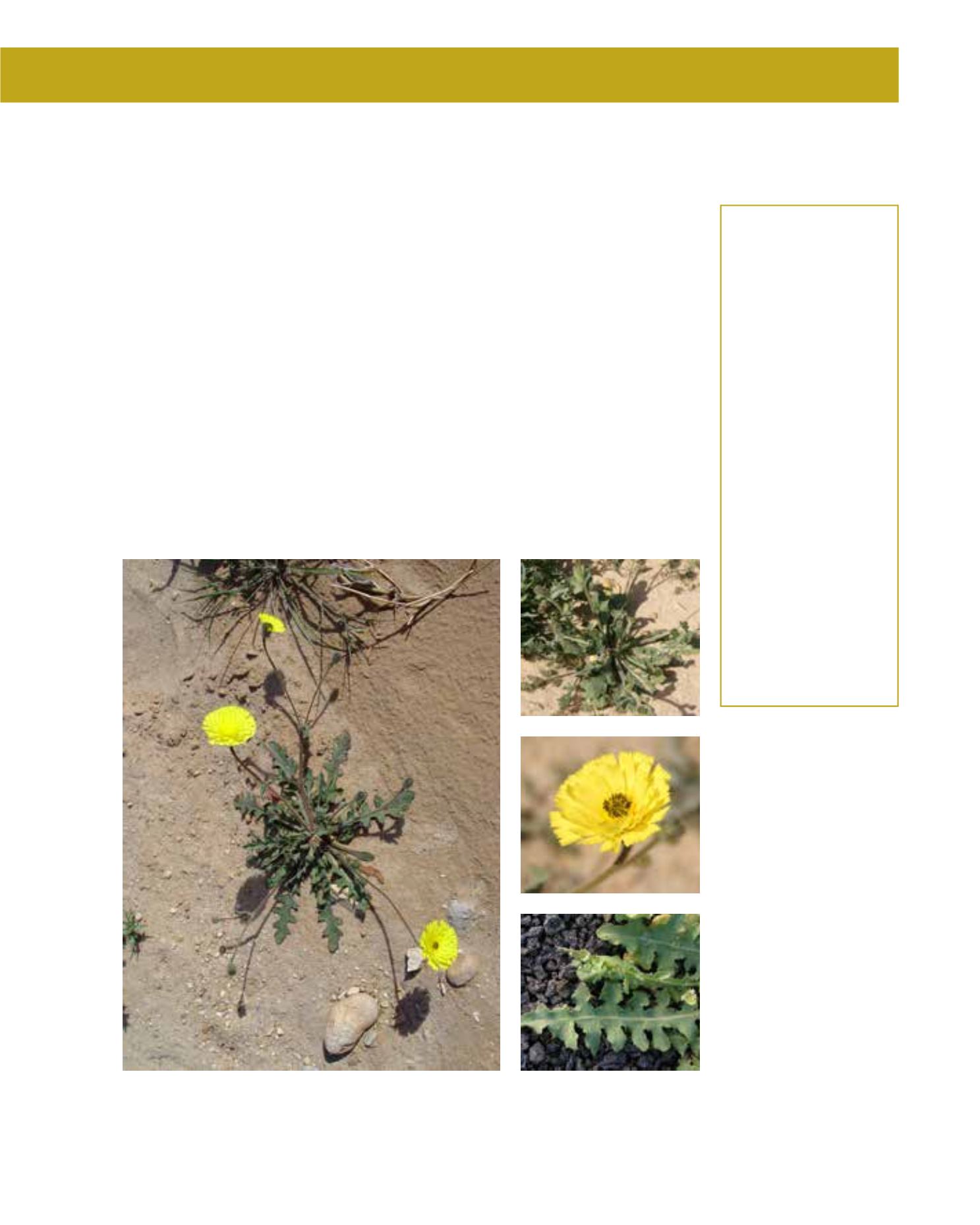

GENERAL
Origin
:
sub-tropical
Vigour
:
fast growing
Humidity
:
very arid, semi-
arid
Propagation :
sowing and
pricking out
Maintenance :
low, moderate
CONDITIONS
Urban climate :
vulnerable
Dessication :
resistant
Stagnant water :
vulnerable
Irrigation
:
low, none
Salinity/ppm :
moderate (1800
ppm)
Hardiness
:
-3°C
SHAPE
Type
:
perennial
Height
:
0.5 m
Spread
:
0.2 m
Foliage
:
deciduous
FLOWER
Colour
:
yellow
Size
:
2 cm
Period
:
March - April
FRUIT
Type of fruit :
achene
Fruit size
:
0.5 cm
Launaea nudicaulis, or in Arabic safara or hawa, is a perennial herb from the sub-tropical climate
zone. It is native to the Arabian peninsula, Northern Africa and Turkey. The flower stalks are
greyish-green and arise from the rosette of green leaves growing flat to the ground. Leaves are
lanceolate and the margins are dentate. The bright yellow flowers appear in spring and are 2 cm
in diameter. The stalk with its flowers at the branch ends reaches a height of 50 cm. During the
summer, this perennial is dormant in the ground and comes back with the first rain. Launaea
likes sandy and silty soil. The salt tolerance is medium. This plant can be found all around Arri-
yadh, especially in Thumamah, because it is not browsed by livestock there. Propagation can be
done by seeds. Launaea is well adapted to desert conditions, but in desert-like planting themes
in landscape design it has the disadvantage that it will disappear in the summer drought. With
irrigation, flowering and growth can be improved and it will not become dormant. Because of
its rich flowering, it can be used in near-natural gardens, such as rock or steppe gardens, as a
groundcover. Launaea attracts bees. In former times leaves were applied to reduce fever.
186
Launaea nudicaulis,
Asteraceae
Launaea,
safara, hawa
















